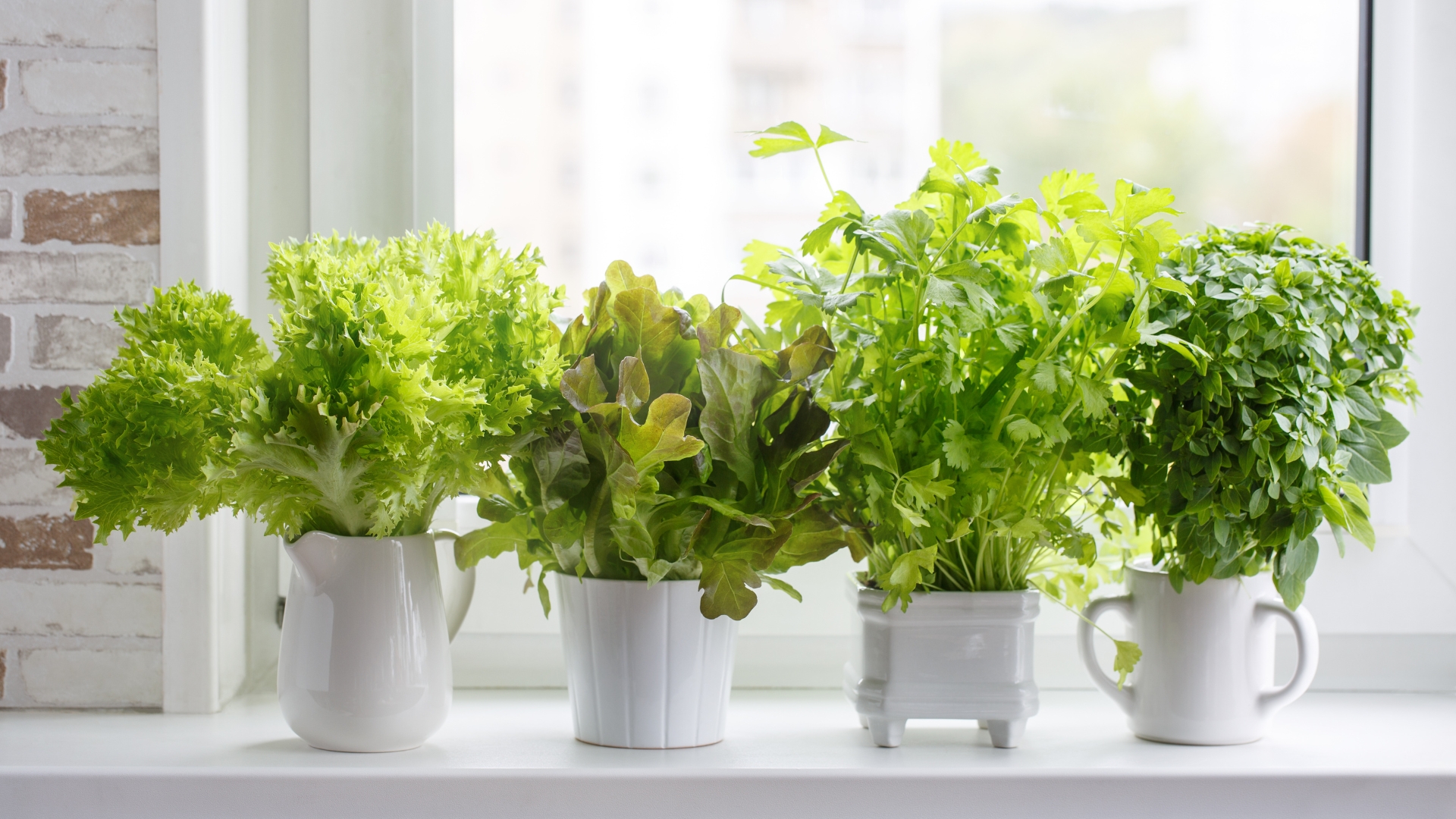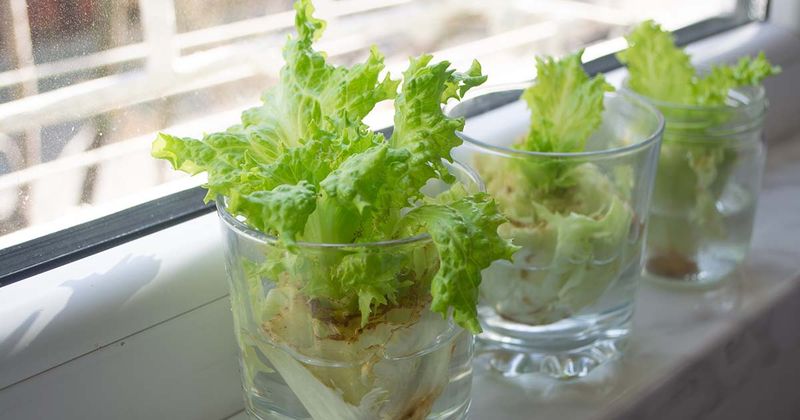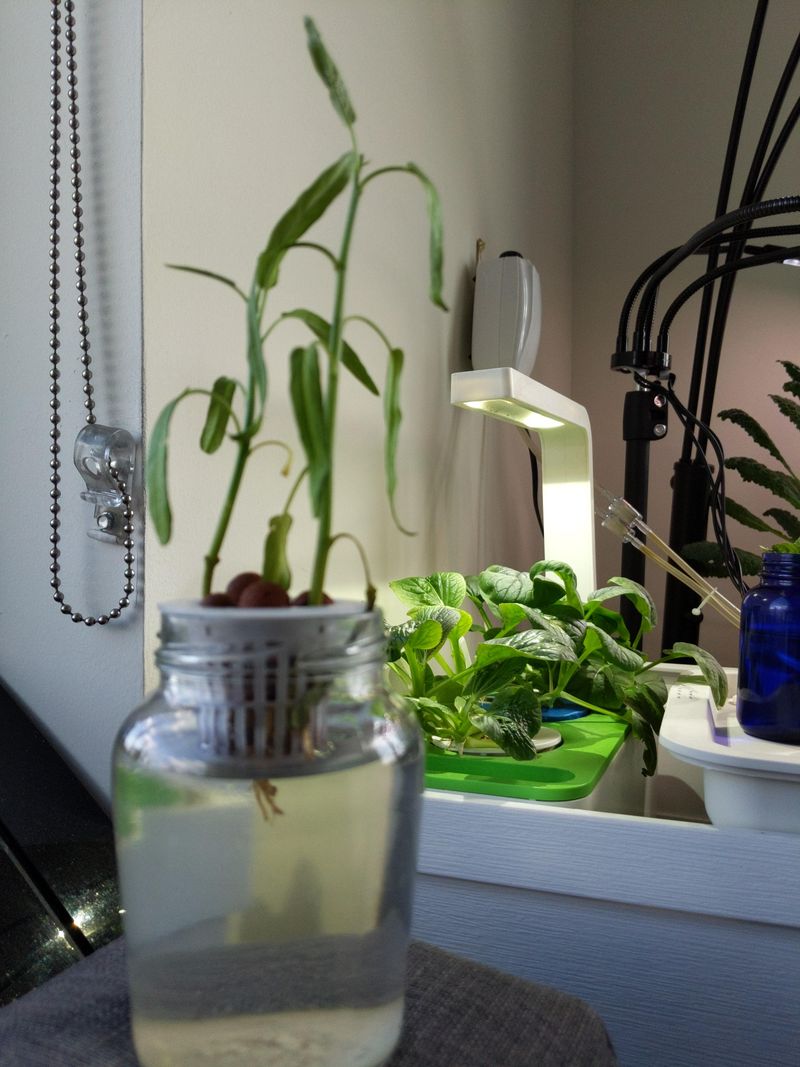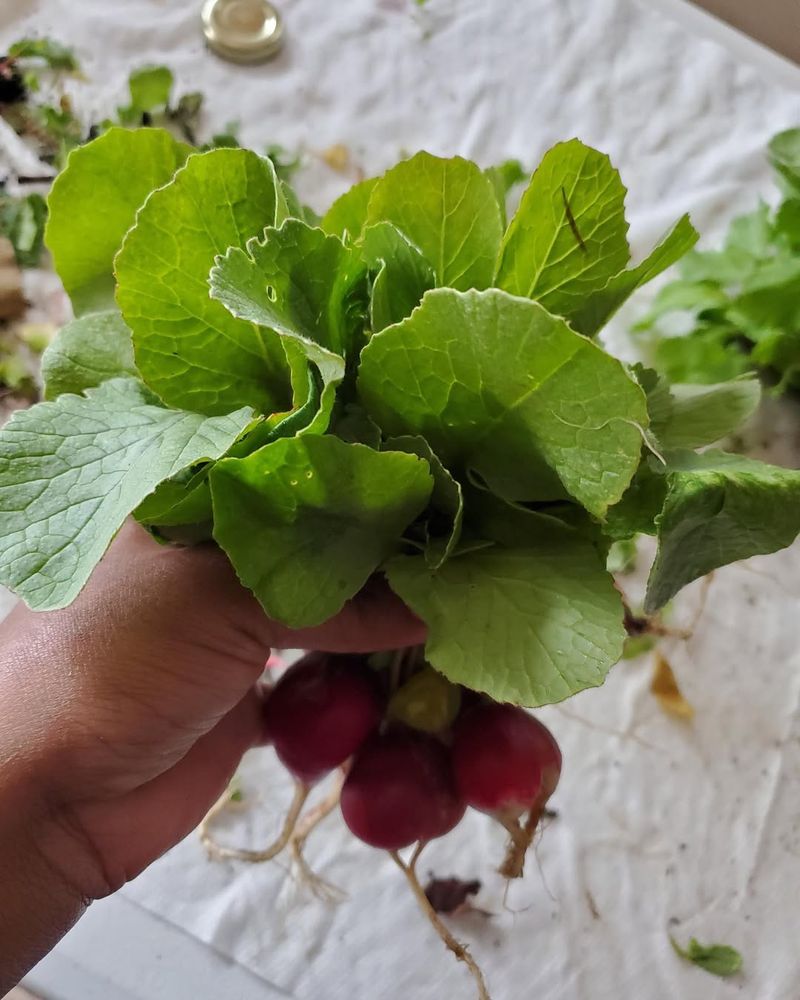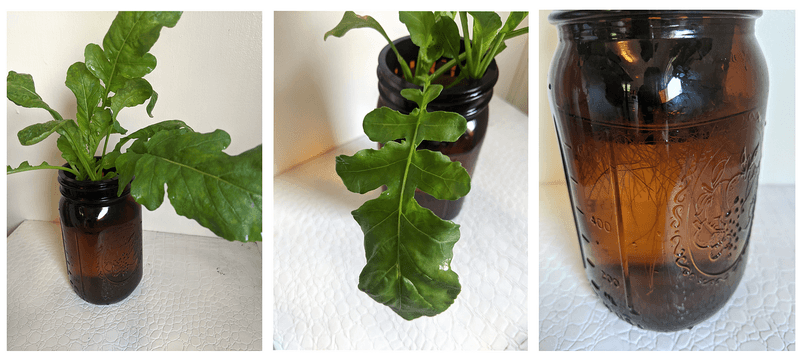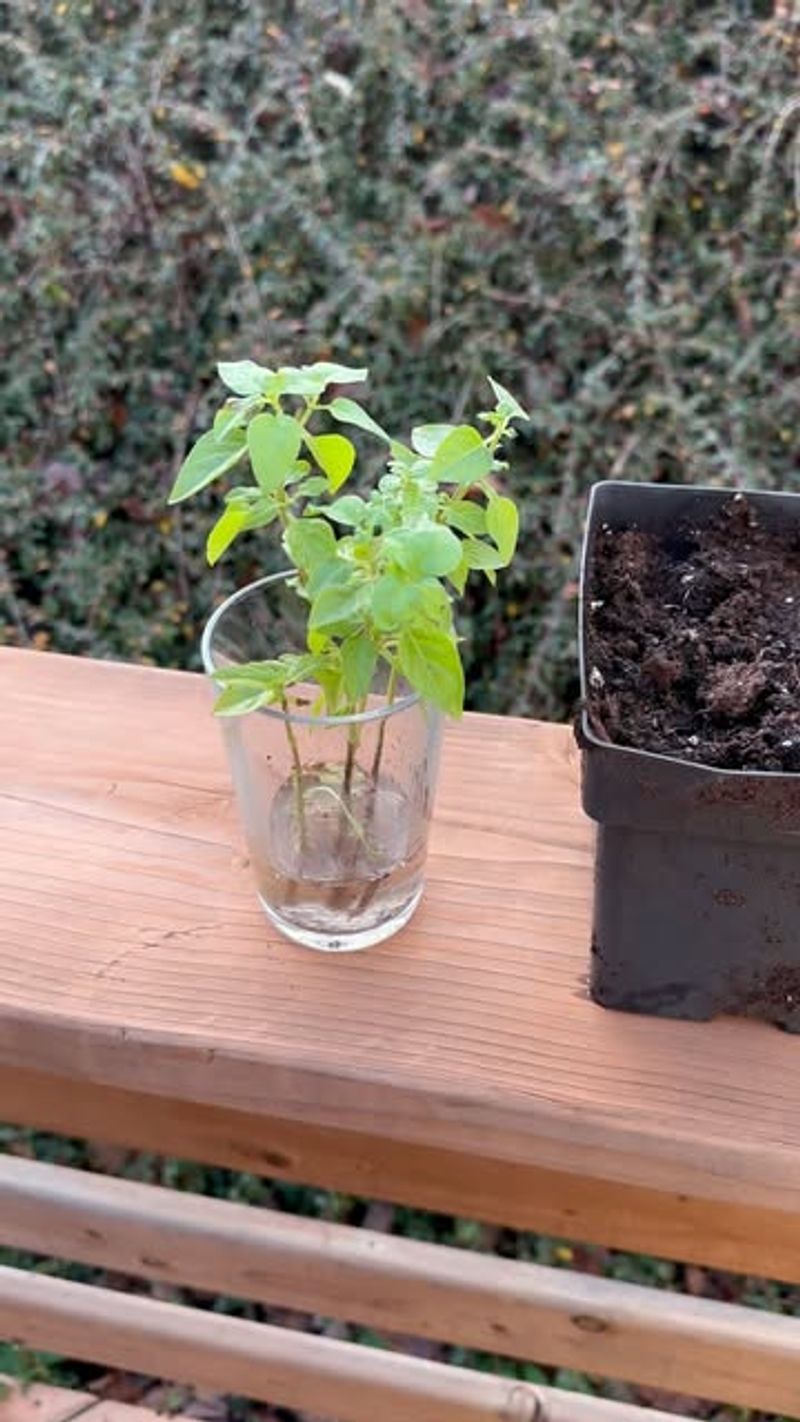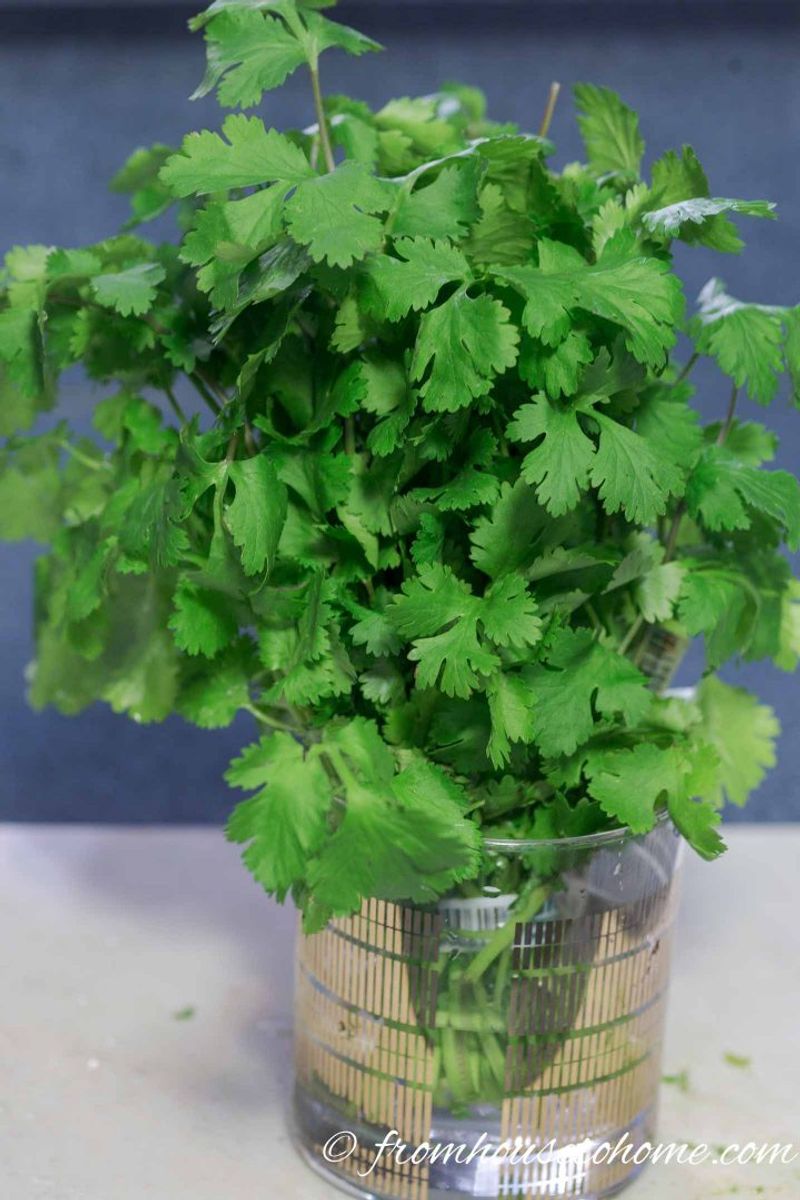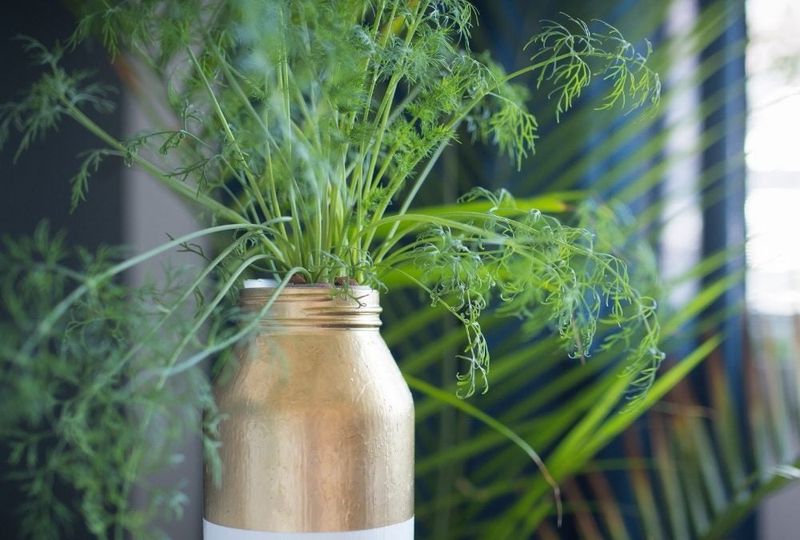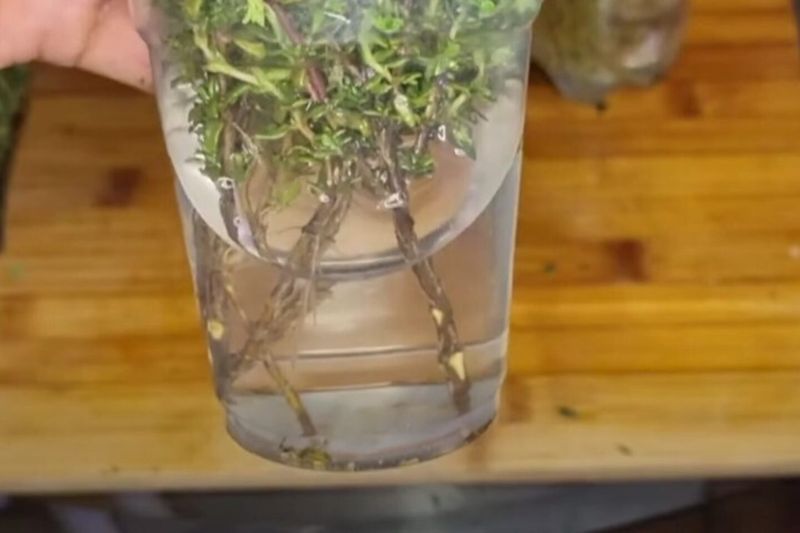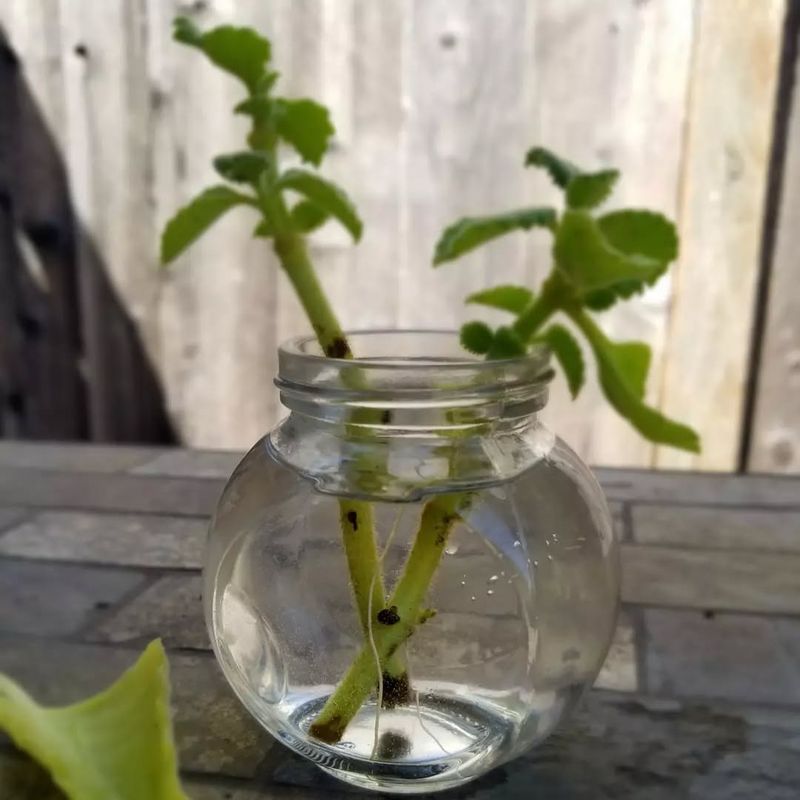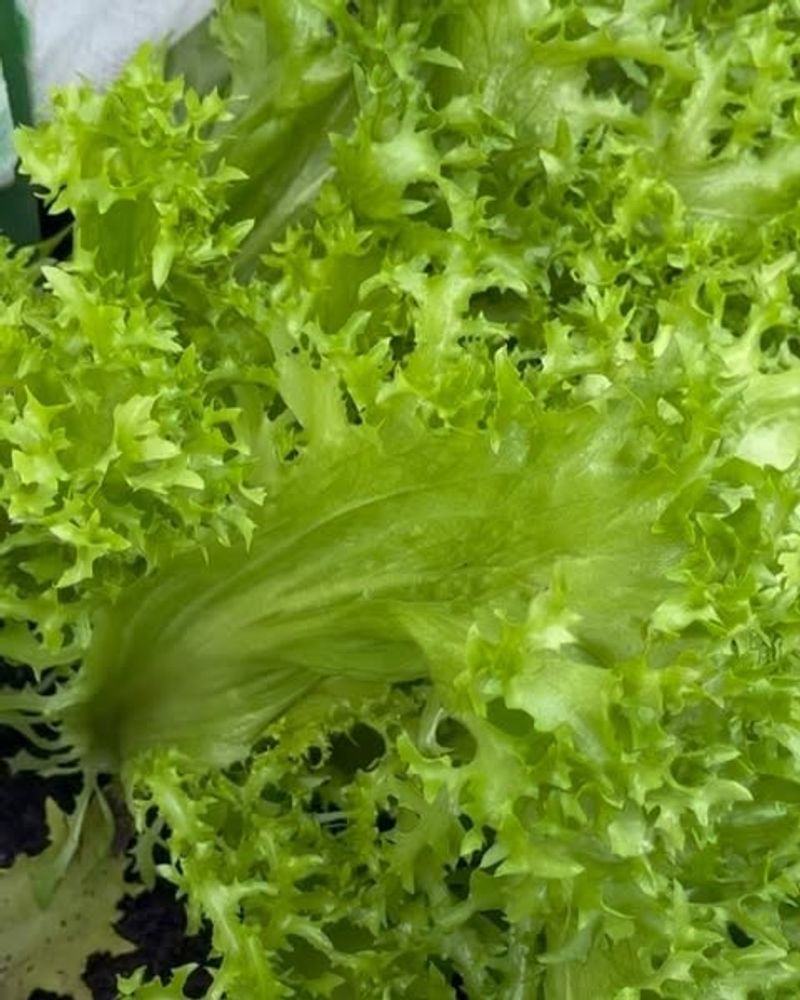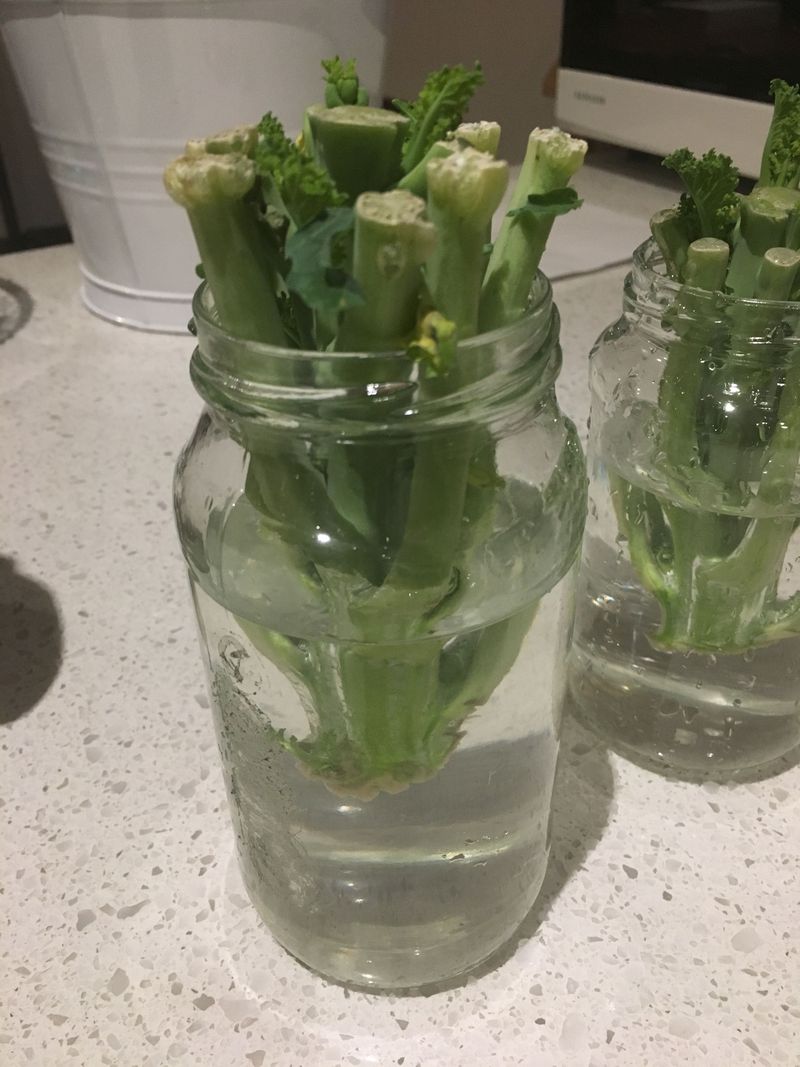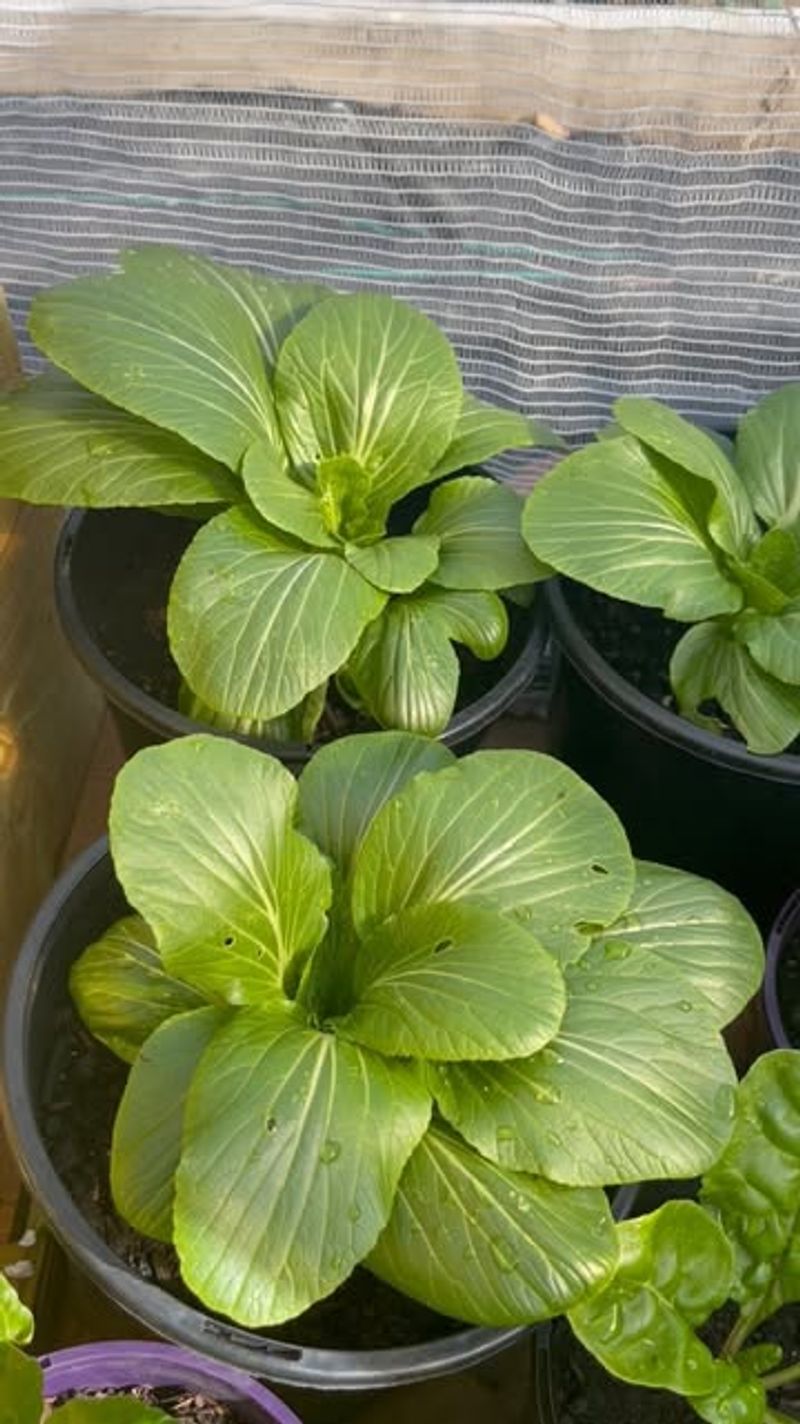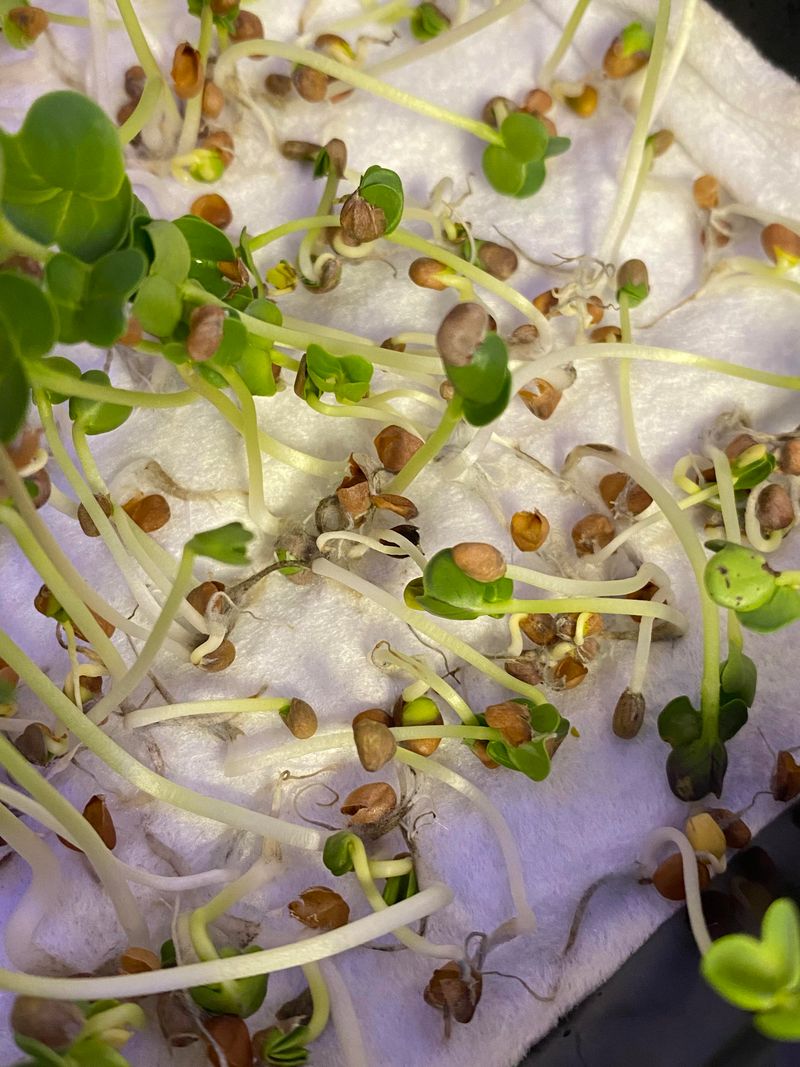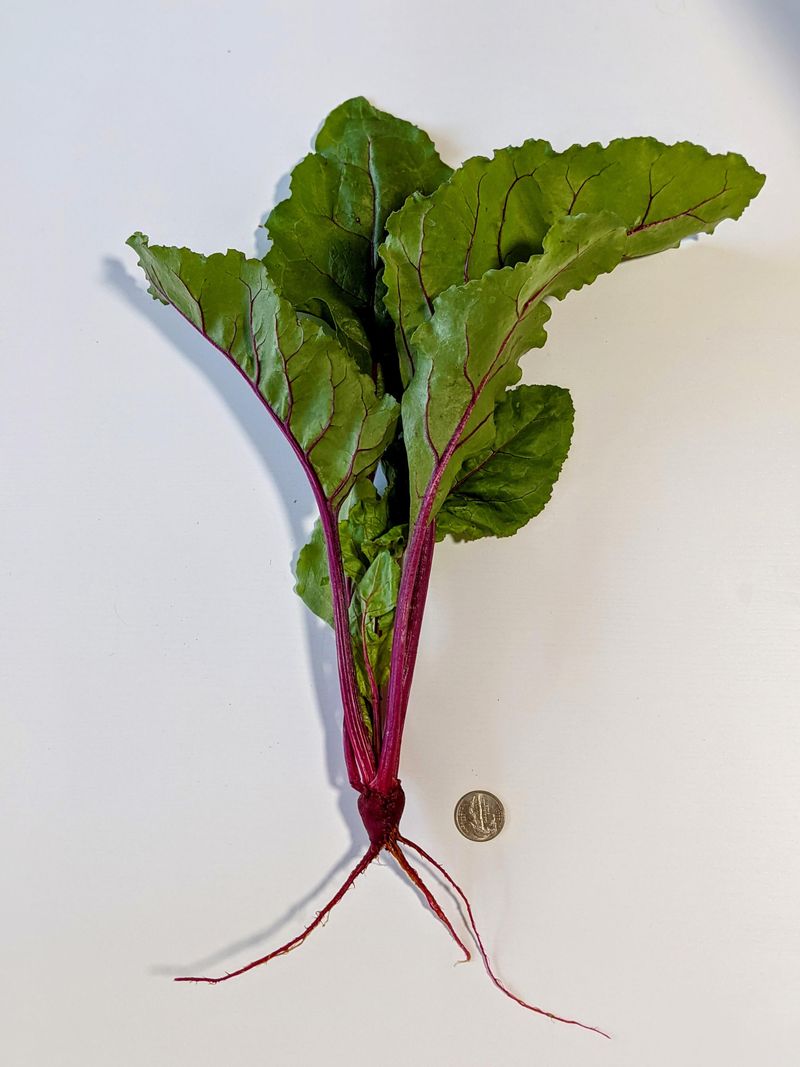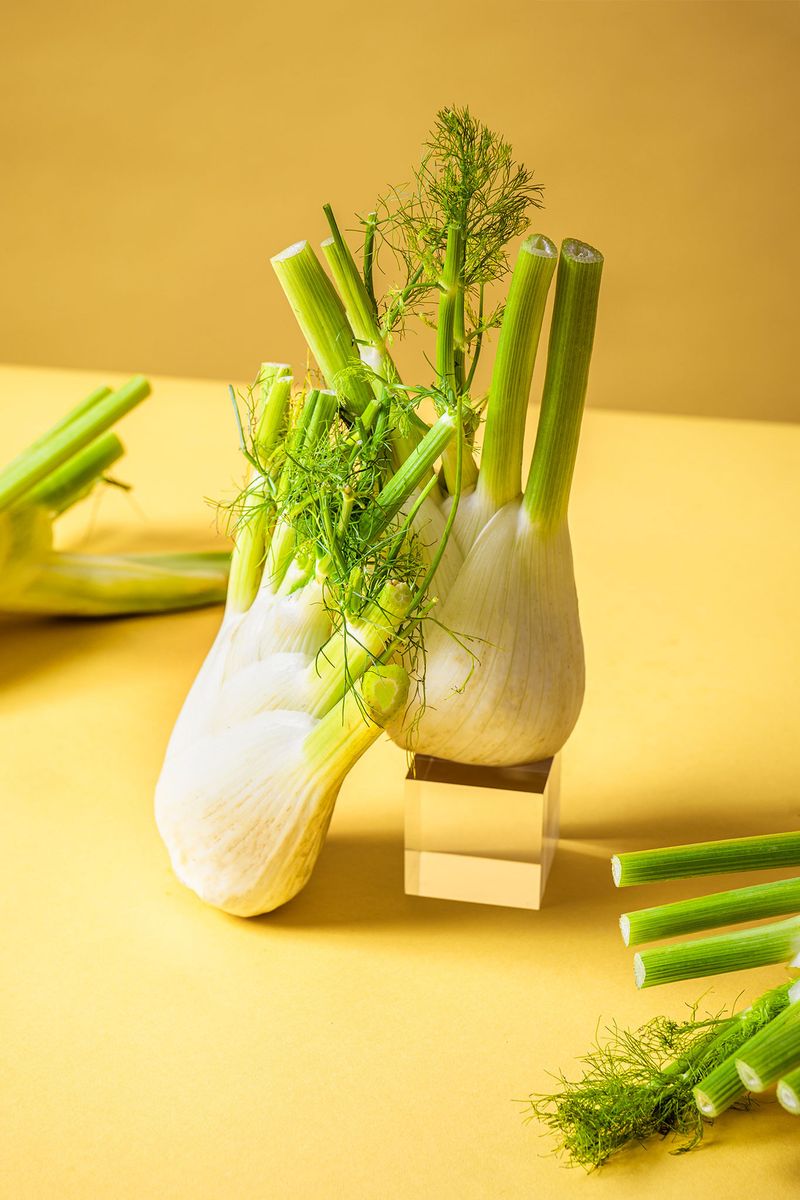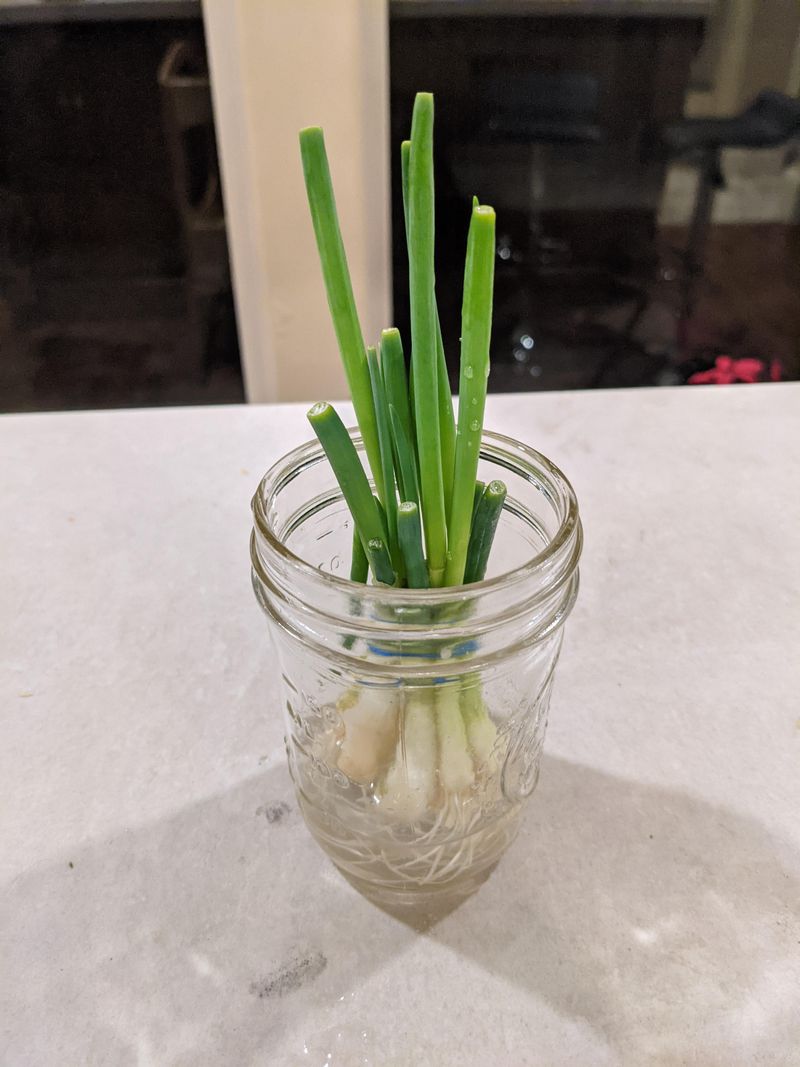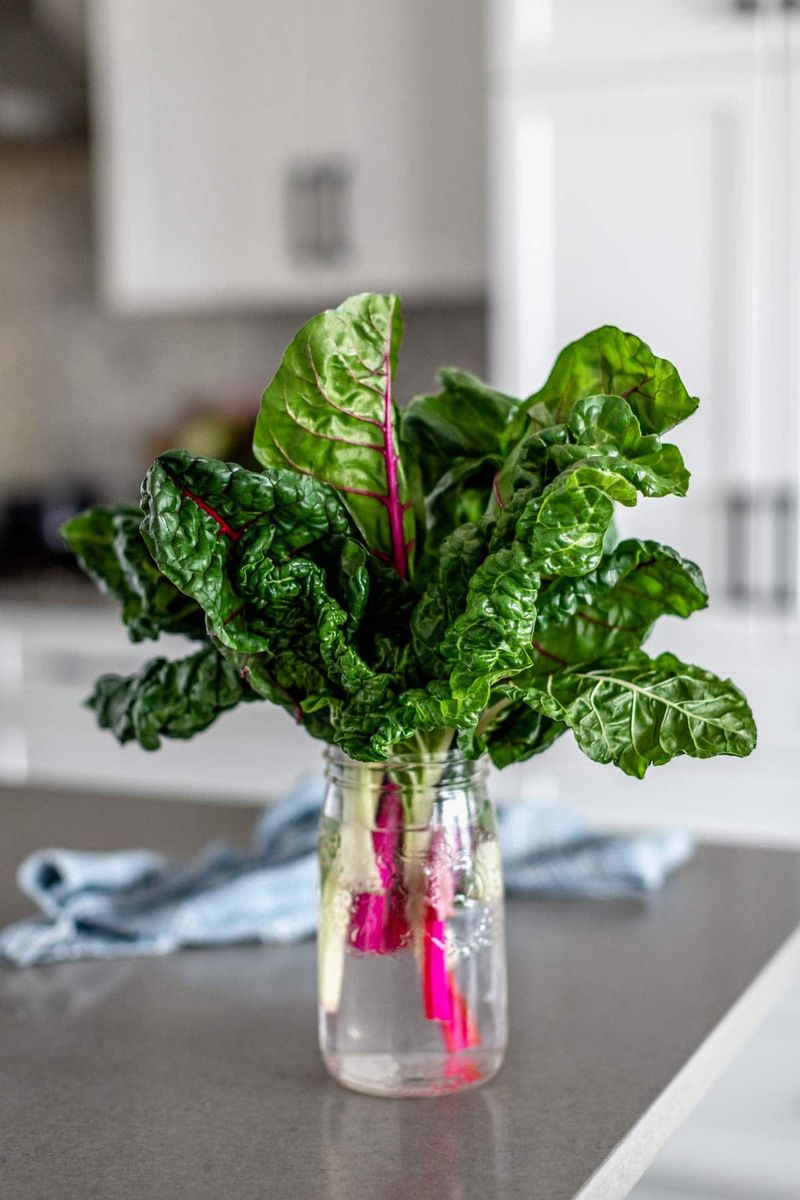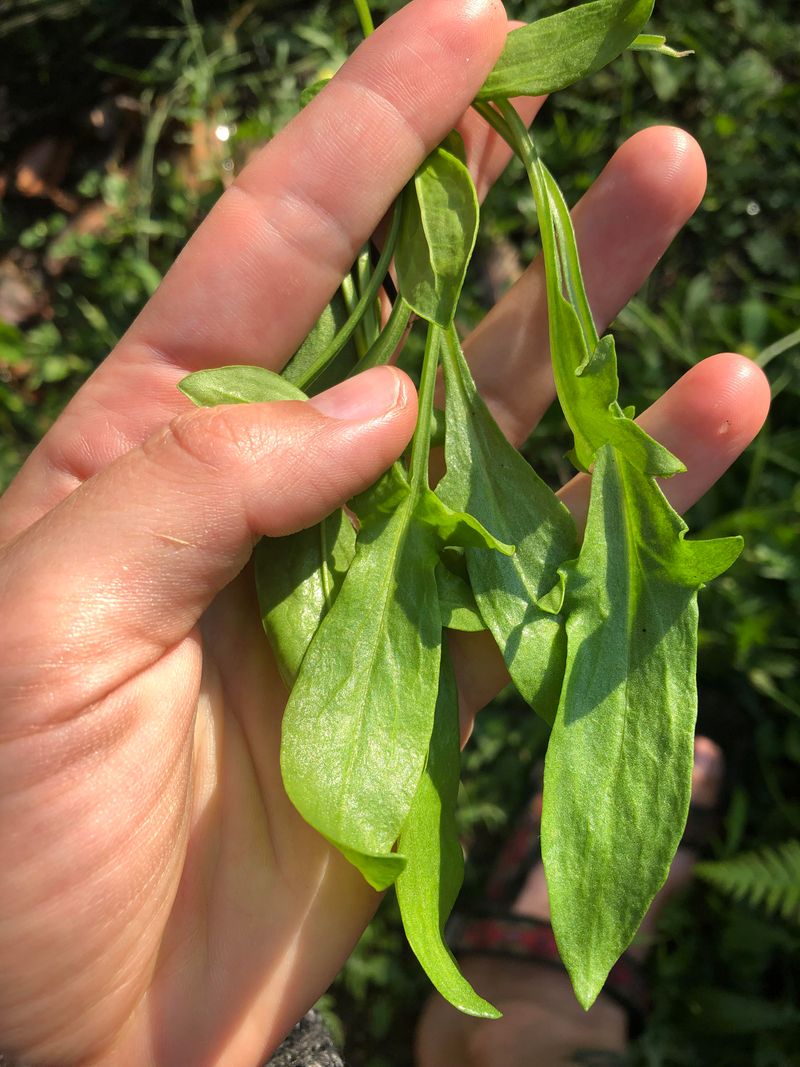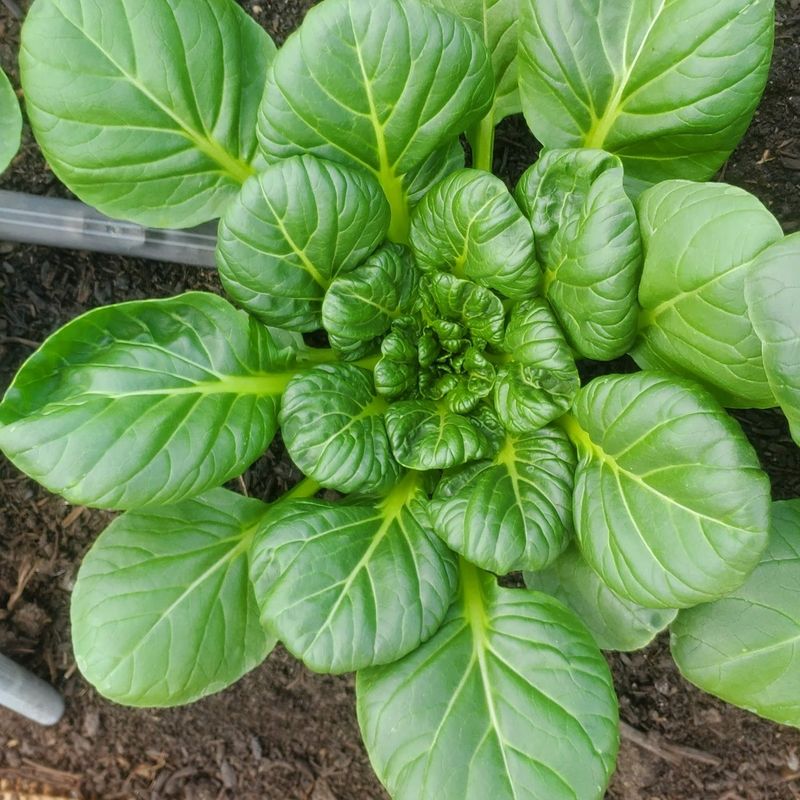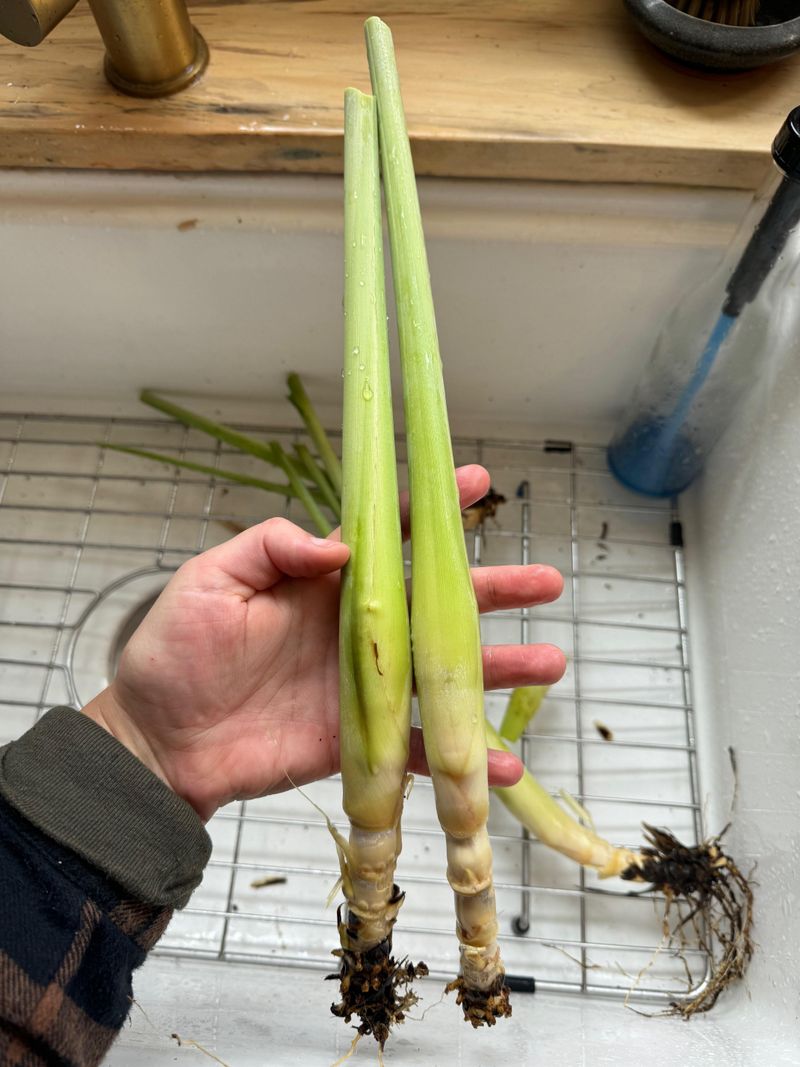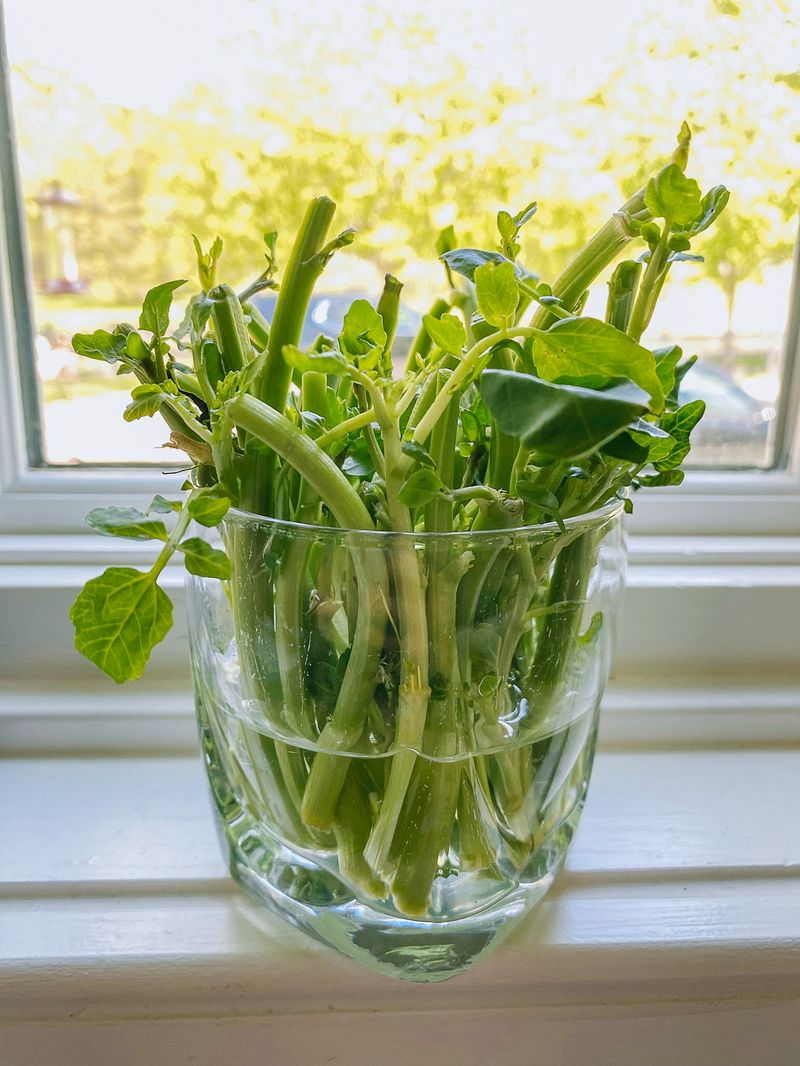What if I told you that your kitchen could become a veritable Eden of greens with just a cup? Yes, you heard it right! Imagine turning your windowsill into a mini-farm with nothing more than a few cups and a sprinkle of patience. From leafy greens to spicy delights, growing your veggies in a cup is the ultimate way to combine culinary curiosity with gardening prowess. And fear not, even if you lack a green thumb; these veggies are as forgiving as they are fresh. Here’s a list to get you started on this delightful journey of cup gardening!
1. Lettuce
Ever wondered how to transform your kitchen into a leafy paradise? Enter the humble lettuce! With just a cup, you can grow your own fresh greens right at home.
Picture this: crisp leaves sprouting up, ready to spice up your salads and sandwiches. All you need is a sunny spot and a little water to see the magic unfold.
Think of it as your personal green revolution, one leaf at a time. Not only is it easy, but it’s a conversation starter, too! Who knew a simple cup could bring such joy?
2. Spinach
Spinach, the Popeye-approved powerhouse! This leafy green is a champion when it comes to cup gardening.
Picture this: waking up to lush, vibrant spinach leaves that are ready to leap into your morning smoothie or sauté pan.
How does it feel to know that your windowsill is a source of strength and health? It’s like having a superhero cape for your meals. Now that’s a green thumb with muscle!
3. Radishes
What’s red, round, and rad? Radishes in a cup! These spicy little orbs are perfect for adding a zing to your life.
Planting radishes in a cup is like watching nature’s fireworks unfold, as they grow fast and furious.
Feeling adventurous? Toss them in a salad or munch them as a snack. Either way, they bring a peppery punch that keeps your taste buds on their toes!
4. Arugula
Arugula might seem like a soil-only kind of veggie, but it’s totally down to start its life in water. Grab a handful of fresh arugula cuttings or sprout seeds using a damp paper towel method, then transfer the baby shoots into a shallow cup of water.
Let them soak up the light and grow their first roots—it won’t take long. Once the roots are about an inch or two, it’s time to make the move to soil for real leafy growth. Arugula grows fast and brings that signature peppery bite to any dish, so the payoff comes quick.
A cup of water, a little patience, and boom—you’ve got salad growing on your sill.
5. Mint
Mint is practically built for water-starting. Just snip a healthy stem, remove the lower leaves, and set it in a cup of clean water.
Within days, you’ll see roots curling out like it’s ready to move in. Once those roots are about 2 inches long, it’s time to give your mint a proper home—transfer it into soil so it can really take off.
Until then, it’ll keep your space smelling fresh and your tea leaves stocked. It’s a low-effort, high-reward plant that thrives with just a little love and a sunny windowsill.
6. Chives
Chives start strong in water, making them perfect for beginners. Grab a bundle with roots still attached (grocery store chives work too), trim them down, and stand them in a cup with the roots submerged. They’ll rehydrate, regrow, and even start sprouting fresh green shoots within days.
Once roots are sturdy and healthy, move them into soil to keep the harvest going strong. It’s like kitchen alchemy—no soil, no stress, and all the oniony flavor you need.
7. Basil
Basil is a sun-loving diva that roots surprisingly well in water. Cut a healthy stem just below a leaf node, strip the lower leaves, and drop it into a clear cup of water.
Change the water every few days, and soon you’ll see roots unfurling like little white threads. Once those roots hit the 2-inch mark, transplant your basil into soil and let it grow bushy and bold.
Until then, it makes a lovely green centerpiece that smells like summer. Hydro-start, soil-finish—it’s the basil way.
8. Cilantro
Cilantro’s a little delicate, but totally game for a water start. Snip a fresh stem just below a leaf node, strip the bottom leaves, and place it in a cup with a few inches of clean water. Keep it in bright, indirect light and change the water every couple of days.
Once roots start to stretch out—usually after a week or two—it’s time to rehome it in soil where it can thrive. From there, you’ll get those feathery leaves that make tacos, curries, and salads pop. Just a little patience, and you’ve got flavor on tap.
9. Parsley
Well, this herb plays the long game, but it’s worth it. Start with a parsley stem that’s about 4–5 inches, strip the lower leaves, and let it sit in a cup of water on a sunny windowsill.
It takes a bit longer to root—maybe 2–3 weeks—but once those roots show up, it’s ready to move into soil and get growing.
After the transition, you’ll have a steady supply of fresh, crisp greens that elevate just about anything. From garnish to star ingredient, parsley’s here for the slow and steady win.
10. Dill
The fragrant dill brings big flavor with a soft, wispy look—and yes, it can start in water too. Take a fresh stem, trim it just below a node, and place it in a water-filled cup in a sunny spot. You’ll see roots forming in a week or two, and once they’re solid, it’s time for a move to soil.
Dill loves space to stretch, so give it a roomy pot once it’s ready. With a little care, you’ll have your own fresh fronds for pickling, seasoning, or tossing on top of roasted veggies. It’s delicate, but oh-so-worth-it.
11. Thyme
Fragrant and slow-growing, thyme thrives when given a gentle start in water. Snip a few soft, non-woody sprigs, remove the lower leaves, and place them in a cup with just enough water to cover the stem bottoms.
It takes a couple of weeks to root, but once those white threads show, thyme is ready to be moved into soil and placed in a sunny spot.
This little herb stays compact and low, but its flavor is bold—perfect for seasoning roasted dishes or tossing into a simmering stew. Keep it trimmed to encourage more growth, and you’ll have a steady supply of kitchen magic.
12. Oregano
Popular oregano brings that cozy, earthy kick to everything from pizza to pasta, and it’s happy to begin its life in nothing but water.
Take a healthy stem cutting, remove the lower leaves, and let it sit in a sunny windowsill with fresh water, changed every few days. In about 10–14 days, roots will start to show, and once they’re a couple of inches long, it’s time to give it some soil to spread into.
Oregano loves the sun and doesn’t need much fuss—just regular pruning to keep it full and flavorful. Once established, it’s a hardy, go-to herb that keeps coming back.
13. Cress
Cress is the speedster of the bunch—quick to sprout and super satisfying to grow. You can start it right in a shallow cup or dish with just a damp paper towel or a bit of water at the base.
Within just a few days, tiny green shoots will pop up like they’re in a race to your plate. Once they’ve got a little height and some root action, transfer them to soil to keep the momentum going.
Cress packs a bold, peppery bite that’s perfect for sandwiches, salads, or garnishing just about anything. It’s fast, fun, and full of flavor.
14. Endive
Crisp and slightly bitter, this leafy green regrows easily from its base. After using the top portion, place the remaining stump in a shallow cup of water with just enough to cover the bottom.
Set it somewhere sunny, and within a few days, you’ll notice new leaves unfurling from the center. Change the water every couple of days to keep it fresh. Once roots develop and the new growth looks strong, it’s time to plant it in soil for a fuller harvest.
Endive loves cool weather and well-drained soil, making it a great addition to your windowsill garden lineup.
15. Kale
Hearty and nutrient-packed, kale can kick off its comeback right in a cup. Use the stem from a bunch of fresh kale, pop the cut end into a jar or cup of water, and place it in a sunny spot.
Tiny roots will start to emerge at the base, and soon enough, you’ll see new leaf buds pushing through. Once the roots reach about 2 inches, move your kale into soil to help it bulk up and thrive. With time, you’ll have tender new leaves perfect for salads or sautés. It’s an easy way to bring this supergreen back to life.
16. Bok Choy
This crunchy favorite bounces back fast when started in water. Take the base of the bok choy (after trimming the leafy top), place it in a shallow cup with a bit of water, and let it soak up some sunlight.
In just a few days, fresh greens will start to sprout from the center. Keep changing the water to avoid cloudiness, and once the roots grow in strong, transfer it to soil for the full veggie experience.
Bok choy loves moisture and partial shade once planted, making it a great leafy green to grow indoors or out. It’s a quick, rewarding veggie to regrow, no digging required.
17. Microgreens
Tiny but mighty, these little greens are one of the fastest and easiest crops to grow in just water. Start by sprinkling seeds onto a damp paper towel or a shallow tray with a thin layer of water.
Cover lightly, keep them warm, and within a few days, you’ll see sprouts shooting up with vibrant energy. These nutrient-packed baby greens don’t need to grow roots for transplant—they’re harvested young, usually within 7–10 days.
Just snip them at the base and enjoy their tender crunch in salads, sandwiches, or on top of avocado toast. No soil, no mess, just instant green gratification.
18. Beet Greens
Often overlooked, the leafy tops of beets are a goldmine for regrowth. After using the beetroot, save the top portion with a bit of stem attached and place it in a shallow dish of water.
Set it in sunlight, and soon, fresh beet greens will begin to sprout from the center. While the root won’t regrow, the greens themselves are edible and full of nutrients—great for sautés, smoothies, or as a colorful salad base.
Once the roots extend a bit, you can transplant into soil for a more extended harvest. It’s a smart way to stretch your veggies and cut down kitchen waste.
19. Fennel
This aromatic veggie is more than just a crisp bulb—it’s also a water-grower in disguise. Save the base of the fennel bulb, place it cut-side up in a shallow bowl with water just covering the root area, and give it a sunny windowsill to thrive.
Within days, green fronds will start to regrow from the center, bringing that light, licorice-like aroma with them. Once roots develop underneath, move it into soil for more robust growth and a steady supply of flavorful greens. Fennel may take a little time, but it rewards you with beauty, flavor, and elegance in your indoor garden.
20. Scallions
These kitchen staples are practically built for water regrowth. Just take the white bulb end with roots still attached, pop it into a glass with enough water to cover the roots, and place it by a sunny window.
In just a few days, green shoots will start stretching upward like they never left the ground. Trim what you need for garnishes or stir-fries, and it’ll keep regrowing again and again.
Once the roots get long and strong, move your scallions into soil for a heartier, longer-lasting plant. It’s one of the simplest, most satisfying veggies to regrow—no garden required.
21. Swiss Chard
Bold, colorful, and packed with nutrients, Swiss chard can bounce back from its base in nothing but water. After trimming the leaves, save the base and stand it upright in a shallow dish of water.
With enough light and a bit of patience, new shoots will emerge from the center, full of vibrant color and crisp texture.
Once roots appear and leaves begin to develop, transplant it into soil to let it thrive and produce fuller harvests. It’s a gorgeous green that brings both beauty and bite to your indoor growing lineup.
22. Sorrel
Zesty and lemony, sorrel adds a burst of brightness to your plate—and it’s happy to start life in water. Use a fresh cutting with a couple of leaf nodes, remove the lower leaves, and place it in a small cup with the stem submerged.
Give it plenty of indirect light, and within a week or two, roots will begin to sprout. Once they reach about two inches, transplant into soil for longer-term growth.
Sorrel loves cool temps and moist soil, making it a great indoor green to grow year-round. Tart, fresh, and totally underrated.
23. Tatsoi
This tender Asian green is as beautiful as it is easy to regrow. Start with the base of a store-bought bunch or a small cutting with a node, and place it in a shallow dish of clean water.
With bright, indirect light, you’ll soon see new leaves forming at the center and small roots beginning to stretch down.
Once those roots reach about 1–2 inches, move your tatsoi into soil to give it room to grow those signature spoon-shaped leaves. It’s fast, flavorful, and perfect for salads or stir-fries. A little water and a bit of light go a long way.
24. Lemongrass
Tough, fragrant, and incredibly low-maintenance, lemongrass regrows like a champ. Use a stalk with the bulb intact (often found at the grocery store), and stand it in a glass with just enough water to cover the base.
Place it in a sunny window, and in about a week, new green shoots and roots will begin to emerge.
As soon as the roots are a few inches long, transplant into soil where it can grow tall and lush. The stalks can be harvested for teas, soups, and marinades—and the scent alone makes it worth the effort. It’s tropical vibes, straight from a cup.
25. Watercress
Spicy, delicate, and super fast-growing, watercress thrives in—no surprise—water. Take a fresh stem cutting, strip the lower leaves, and place it in a cup of clean water near a sunny spot.
New roots will appear quickly, often within days, and the greens will begin to sprout again from the top. When roots are well-developed, plant it in moist soil or even keep it partially hydroponic—it loves wet feet. Snip off the tops regularly to encourage bushy growth.
With its peppery flavor and rapid regrowth, watercress might just become your go-to green.

